How Bite Correction Can Change Your Life?
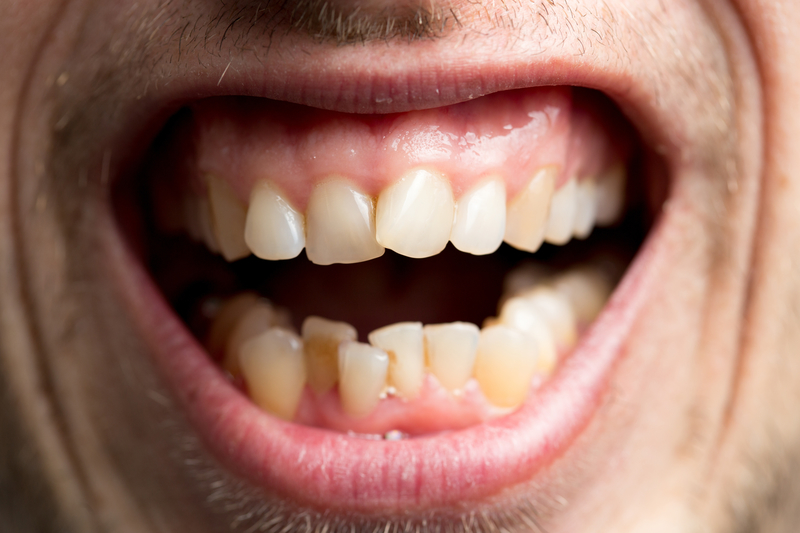
Do you or your child have a problem with their bite or alignment? These problems can seem small at first. However, as a child grows into an adult, bite or alignment issues could cause many health problems. It can even cause speech impediments and difficulty chewing in the future. Find out how bite correction can improve your health and just how important it is to get bite correction via braces if you need it!
Your Bite Should Be a Certain Way
The structure of your mouth is defined by how your teeth and jaws are formed. Your upper jaw and your lower jaw should both follow the same arch in a U shape. Those arches should also line up together. The teeth as well, should lie on top of one another evenly, with your back top molars resting on your back bottom molars all the way towards the front. In a normal bite, the front top teeth will rest on top of your bottom teeth, except they will be just slightly in front of those bottom teeth.
Orthodontic care is not just for teens that are looking to get a straighter smile. In fact, about 1/4th of all people that wear braces are actually children! The American Association of Orthodontics recommends that children have their first orthodontic visit between the ages of 7 and 8. Having an examination early-on helps prevent the progression of orthodontic issues, such as a misaligned bite. How a child’s mouth is forming is a great indication of what their mouth will look like as an adult. If we can already see that their teeth are growing at the wrong angles, or that their jaws don’t line up, we can predict that oral health issues will be present in the future. That is why having this orthodontic appointment at 7 or 8 is so important.
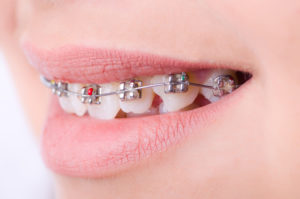
Types of Bites
When a child comes in to have their mouth examined, we can see how the top and bottom jaws line up. In a mouth with correct bite formation, the jaws will line up. If they do and the teeth are not coming in at crooked angles, then a child won’t need orthodontic care unless they want to straighten their teeth later on in life. However, prompt treatment will be needed for alignment and bite correction if a child or older patient has:
- Overbite – The upper front teeth overlap too much over the bottom front teeth.
- Underbite – The upper front teeth rest behind the bottom front teeth.
- Crossbite – Teeth are at varying angles in the mouth, which can lead to decay, broken teeth and speech problems.
Benefits of Bite Correction for Children
The ideal time to receive any treatment for bite correction is during the childhood years. This is when the mouth and jaws are still growing. Because the bones aren’t set yet, it is much easier for an orthodontic appliance to mold a bite into the correct shape without too much effort. This is generally why a child would receive bite correction treatment before they are 10 years old.
If a child receives bite correction via braces, they benefit from their mouth forming correctly. Where there were once speech problems developing, their speech can start to sound normal without lisps or other impediments. Facial features will appear more normal because the structure of the mouth will be maintained with orthodontic appliances. In a child with severe bite problems, some people can physically see parts of the jaws jutting outward. This makes the face look different than it should, and speech will almost certainly be compromised. We stop that incorrect shaping before the jaws harden later on and before dental diseases and problems are developed.
Even if you don’t detect any dental issues with yourself or a child, there are still many advantages for bite correction and braces at an early age such as:
- Observing the progress of incoming teeth
- Monitoring facial and jaw development
- Guiding incoming teeth into their ideal position
- Detecting hidden dental issues
- Reducing the risk of impacted teeth
- Decreasing the risk for permanent tooth extractions (as teeth won’t get uneven pressure that breaks them)
- Reducing the risk of cavities and gum issues that happen when the teeth are crooked and harder to clean
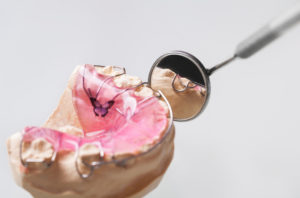
Benefits of Bite Correction for Adults
If you didn’t receive orthodontic care as a child, it is not too late to receive it later on in life. Adults and teens make up the other 3/4ths of patients that get braces. At about age 11 or 12, most of the permanent teeth should be in the mouth. At this time, we can look at a patient’s teeth and see if they need their teeth straightened. When bite problems are present (because child orthodontics was not done), it is harder to do them as teens and adults, but it can be done with normal orthodontic appliances. In some cases, some surgery may be done to reshape areas of the mouth that have hardened into place.
However, the benefits of bite correction and tooth alignment for teens and adults is astounding. Studies show that people perceive you as more successful, healthy and happy if you have straighter teeth than if you have crooked teeth. You’re more likely to get a job over someone that has crooked teeth, because your smile is an expression of your health and how well you care for yourself. That can translate into how well you care for other things, like your obligations.
Studies show that in adults and children alike, that confidence soars and smiles are shared more often when people feel good about their smiles. That confidence boost can change your entire outlook on life, and can lead you to be a more successful person than you otherwise could be. If you have teeth in need of bite correction or straightening, don’t hesitate to see what orthodontic care can do for you! Call Belmar Orthodontics today at (303) 225-9016!
What To Do About Your Wisdom Teeth
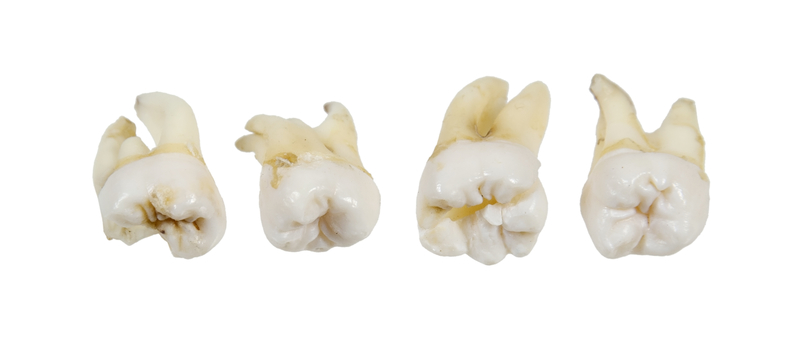
The wisdom teeth are back molars that, on average, come in between the ages of 17 and 21. Wisdom teeth can put pressure on the rest of your teeth and make them crooked if something isn’t done about them. You don’t want wisdom teeth to undo all the hard work you spent getting your teeth straight. Find out how wisdom teeth affect your oral health and what to do about them if you are planning on getting braces or if you just got them off!
Your Permanent Teeth
Every person gets two sets of teeth during their lifetime: the baby teeth and the permanent teeth. If you are reading this, then you have already likely lost all your baby teeth. That means you are left with your permanent, adult teeth, which you will have for the rest of your life. Well, at least most of them. The majority of Americans get their wisdom teeth removed to help keep their mouth healthier. You have several sets of large teeth in your mouth, which are called the molars. These are the bigger teeth towards the back of your mouth that help you chew up food.
Most people have all of their permanent teeth by their early teen years. However, there are up to 4 teeth that come into the mouth later on, usually between the ages of 17 and 21. These are the wisdom teeth, and no they are not teeth that provide you with your wisdom. These are a third set of molars that come in as you transition from a young adult to an adult. As a people, we don’t really use these third molars, but our ancestors in centuries past may have had much more use for them when it came to chewing meat.
However, one of the reasons they are called the “wisdom teeth” is because this transitioning stage from young adulthood to adulthood. This is generally a time when people rapidly mature and make many life changes, which helps increase their wisdom. Hence, the “wisdom teeth”.
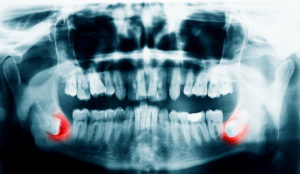
What to Do About the Wisdom Teeth?
As mentioned, we don’t really use these third molars in our day. In fact, the wisdom teeth can actually cause your smile more harm than good. They come into your mouth at an angle, which can put pressure on your closest molars. The wisdom teeth can push those molars, causing all the teeth to start pushing into each other. This creates a crooked smile. The pressure and angles of these wisdom teeth coming in can weaken the second molars or crack them. When the wisdom teeth start coming into the mouth at an angle, they are called “impacted teeth”.
Generally, the wisdom teeth crowding or damaging your teeth isn’t painful. However, if you develop tooth decay because of the wisdom teeth, and it gets severe, then you will feel pain. Some patients will have the wisdom teeth sit right underneath a layer of gum tissue. That this layer can collect bacteria and food particles, which can actually lead to an infection in your mouth, which you don’t want. Other patients also have bone or other teeth blocking the wisdom teeth, so they will never come in very well and will really damage your smile. Hence, the reason why they are so often taken out. You don’t really need them and they generally cause mostly problems instead of benefits.
What Is Surgical Orthodontics?
Many people are born with 4 wisdom teeth. However, depending on genetics, some people may only have 1, 2 or 3 wisdom teeth or even none at all. It all depends on the genetics you have. Some will have them only in their top jaw or only in the bottom jaw. However, there are so many problems with these teeth that we recommend that they be removed before your smile is affected. Surgical orthodontics and surgical dental procedures can remove the wisdom teeth.
These procedures will either use topical anesthetics or will put a patient completely under to remove the wisdom teeth. We take full x-rays of both the top and lower jaw of your teeth so you can see the angle and trajectory of your incoming wisdom teeth and how they will affect your oral health. Generally, the gums are cut right above where the wisdom teeth lie. Then, they are removed with dental tools and the gum flaps are put back in place and closed up. In just a few weeks, you will feel good as new and you won’t have problems with your wisdom teeth. For such a simple procedure, it’s worth it to protect your smile and to keep it straight.
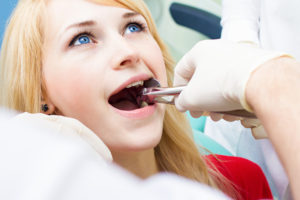
Keeping Your Smile Healthy
Just like any other part of your body, it may take many steps and actions to keep those parts healthy. Your smile is something that takes work to maintain, but luckily it’s not hard work. All you have to do is brush your teeth at least twice a day as recommended by the American Dental Association. They also recommend flossing at least once (if not more), using mouthwash and fluoride products, and seeing your dental professional often.
These things don’t take much time and effort, but those small actions can save your smile and keep it healthy and straight throughout life. If you need tips for keeping your mouth healthy or you want to know more about what you should do with your wisdom teeth removal, call Belmar Orthodontics today at (303) 225-9016!

